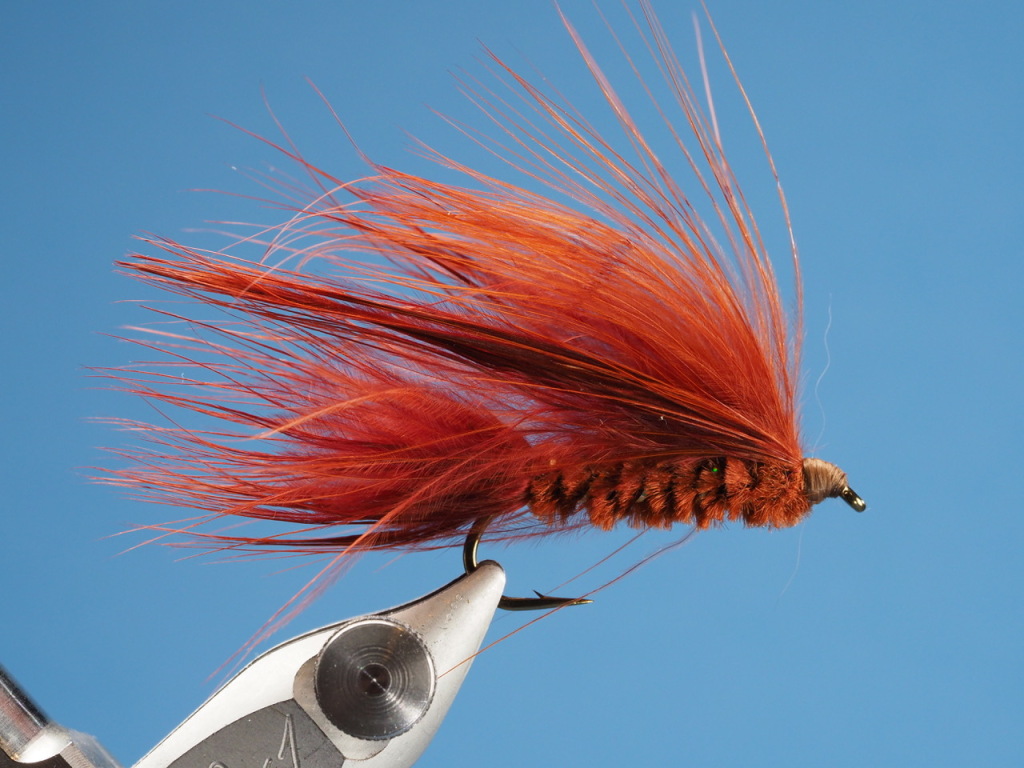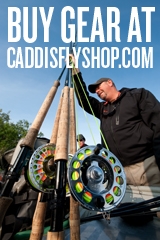
This Brown Marabou Lake Leech was tied by my friend who has fished this pattern on Gold Lake since 1974.
This is a fly tied by a friend who fishes Oregon Cascade lakes each year. In particular, he has been fishing this fly on Gold Lake since the early 1970s, and with great success. I will follow my remarks with the recipe, with the understanding that it is entirely satisfactory to substitute materials and modify this fly as you proceed at your fly bench.
The crucial elements of this fly are its size, the addition of a little weight under the body, and the overall color. This of course takes into account that the elemental fish-attracting power of marabou is also foundational to the fly’s action.
I’ll also add several important points.
1. This fly is tied on a traditional barbed hook. Make sure you understand the regulations and your intentions when tying and of fishing barbed hooks. Many times barbless hooks are required, but even if not, there are many good reasons to tie and fish barbless.
2. This fly uses .015 lead-free wire under the chenille because this is true to the original pattern list. However, this is 2020 and is definitely not 1974, so you might substitute a bead at the head of the fly instead of, or in addition to the wire.
3. The other point is the absence of any sort of flash in the fly. I have become so accustomed to using beads and flash in my nymphs and wet flies that I’ve lost sight of the possibility that a fly might fish better without these materials. So in this fly, lies our opportunity to test the matter. Tie with and without beads and flash, fish both versions at the same time, and decide if these materials affect the trout’s attraction.
4. This fly can be tied bigger and smaller. My friend ties this in a #8 3XL most often because this has proved to be by far the most productive size.
Big Brown Leach – Gold Lake Leech
Hook: 3XL Size 8
Thread: Veevus 8/0 brown
weight: .015 lead-free wire, 6-8 turns
Tail: Rust brown marabou
Body: Brown chenille, medium
Rib: Small gold or copper wire
Wing: Rust brown marabou
I decided to share this fly now, because I realized that there must be fly tyers of all experience levels browsing youtube and the Internet of blogs, searching for something to tie tonight. For the very experienced tyer, this fly might not seem to offer sufficient challenge. But I’m guessing that even the most experienced among our fly tying friends might see this fly and think . . . “wow, I just remembered that I(‘ve been out of brown leeches for two years, and I need to tie some to re-stock my lake boxes.”

The very first flies i saw, the first trout flies, were snelled wet flies, carried in a leather fly wallet. They were snelled Royal Coachman wet flies in Montana. I will never forget what they looked like in my hand.
Thinking about my lake fishing friends, some carry leeches of a wide range of sizes, and some carry only black, brown, olive, and claret.
Whatever your thinking, it is smart to make sure you do not let your boxes go empty on the brown, and I would emphasize rusty brown color leeches. When I say Leech, I mean to include all manner of “Bugger” style flies in the family of leech-like flies.
May you find relaxation and a sense of anticipation for the coming season whenever you sit to tie.
Jay Nicholas, January 2021




Jay, everyone knows trout only eat new fly patterns. The old flies won’t work anymore cuz the fish have learned about them. 🙂
BTW, it’s possible lead wraps in the middle of a fly (as opposed to a bead) give the fly a particular action that fish find interesting. I think the fly might hover instead of dipping on the pause.
Thanks for all the great tips and videos, Stevie